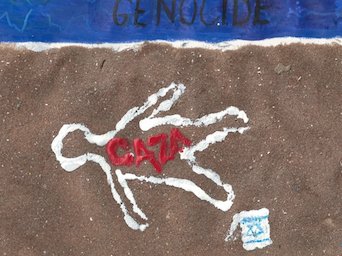Gaza 2014: Old Israel in a New Middle East
By Mosab Qashoo
The military operations undertaken by both Israel and Gaza bear many resemblances to what occurred in 2008 and 2012. Military might is still just as disproportionate, with Israel dropping hundreds of tonnes of explosives in 1,600 bombings and Hamas firing 1,500 non-explosive projectiles and rockets. Similarly, while it is unjust to compare casualties, the enormous gap between the over 265 Gazans and the 2 Israelis killed is telling. Of course Israeli weaponry is ever advancing with the assistance of US tax dollars. Despite the loss of its tunnels into Egypt and its severed relationship with the Syrian regime, Hamas has launched rockets farther than ever before and has sent surveillance drones and SCUBA divers into Israel. Interestingly, both Hamas and the Israeli government have implemented new tactics meant to warn civilians of impending attacks. Many news networks have focused on so-called “warning rockets” or “roof tapping”, very friendly sounding words that, no doubt, were crafted and injected into the conversation by Israeli Hasbarists. This media sculpting is very skillful, considering that these “warning rockets” are likely more powerful than Hamas’ most advanced rocket. Not to mention that most of these smaller bombs hit less than a minute before a massive bombing, giving Gazans little time to move to a slightly safer location, and certainly not enough time to gather family photos, identity documents, money or other valuables. They also announced their ground invasion in advance, though there is little Gazans could do to prepare. Hamas has provided slightly more meaningful warnings through text messages and TV broadcasts hours prior to launching rockets, a reasonable time for Israeli citizens to take care of their business and get into their bomb shelters. It is as if there is a side battle of who can appear to be giving the most warning to the other side.
The use of social media is a much loved topic in most news outlets. In this instance, the interest lies not in the use of social media to allow for citizen journalism or political participation, but instead for its application in military scenarios. For example, Israel now has a smartphone app that warns Israelis of approaching rockets and projectiles. On July 14th, Hamas hacked into the most watched Israeli TV station during prime time and also managed to send blanket text messages to Israeli cell phones in order to convey, in Hebrew, a message stating that Israeli children are not more important than Palestinian children, and that their projectiles would continue as long as Israel continued to target Gazan children, houses, hospitals and schools. Hamas may have learned to focus its media message on the Israeli public rather than the international community from Hezbollah during its conflict with Israel in 2006, the idea being that Israelis will hear these messages and encourage their government to tone down aggression.










